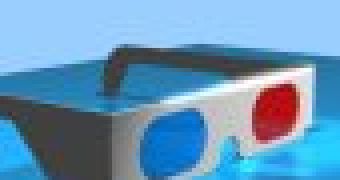In the near future, digital cameras and camera-phones could capture and store 3-D information using an incorporated flash and a new intelligent software. The prototype has undergone several tests and the results are encouraging, with high hopes that future advances will enhance the precision and fidelity of the captions.
Two Japanese researchers, Kazunori Umeda and Naoya Ogawa from Chuo University in Tokyo, Japan, found inspiration for their work in a prototype device made by electronics manufacturer Toshiba in 1999, called the Motion Processor.
The device looks like a webcam surrounded by a number of infrared LEDs and can capture the information by recording the intensity and pattern of the infrared light reflected by the object in the target area. The software can calculate simple things like the distance to the objects and their positioning and spatial orientation.
The initial Motion Processor used the technique to detect the hand gestures of the user and thus to enable him to control the software. "Toshiba proposed the infrared system as an interface device for a PC - a kind of 3D mouse," explains Umeda. "Our aim is to add range measurement function to a standard digital camera."
For this, the two used a commercially available digital camera and took pictures of simple objects with and without a flash activated. Then, they mathematically subtracted the first image from the second, making it possible to examine just the light reflected from the flash.
Consequently, they compared the strength and the pattern of the reflected light, which allowed them to estimate the distances to, and the relative angles of, different surfaces in a scene. The researchers tested the method using angled pieces of cardboard and more complex scenes such as a whole room.
The software calculations produced a 3D model of the room, although a bit rough, because of the fact that some surfaces reflect more light than others, thus posing some problems. "A diffuse, white surface is easiest," said Umeda, "and [reflective] surfaces are hardest - the worst is a mirror."
The authors admitted that there is still a lot of work ahead in order to make it suitable for commercial applications, as the device currently estimates distances with an accuracy of around 6%. The next step in improving the results is to take into account the way different parts of a scene are illuminated by a flash, since objects around the edge of a scene are not illuminated as well as those at the center.
Future research will also test whether they can create 3D images of more irregularly shaped objects and they hope that their system could be used to automatically pick out people in an image, by distinguishing them from the background.

 14 DAY TRIAL //
14 DAY TRIAL // 
